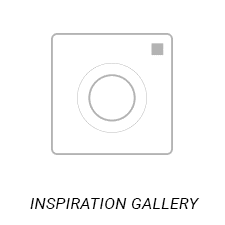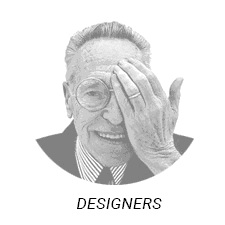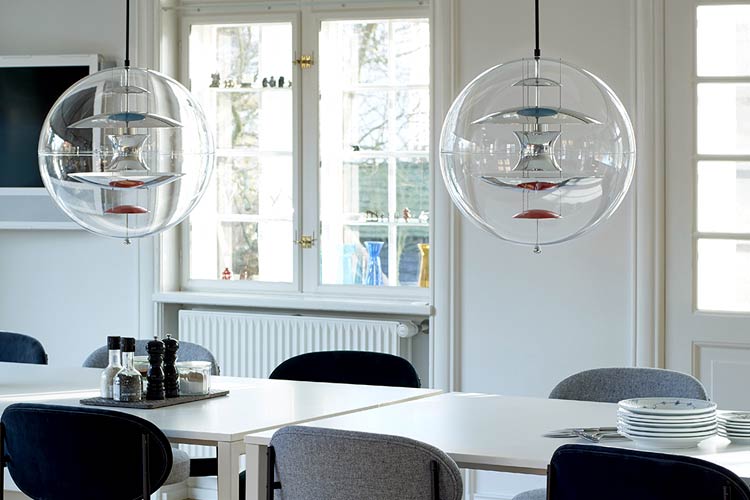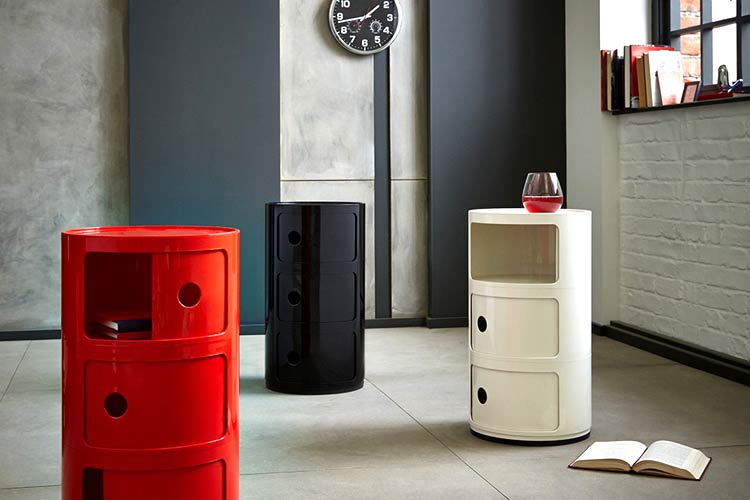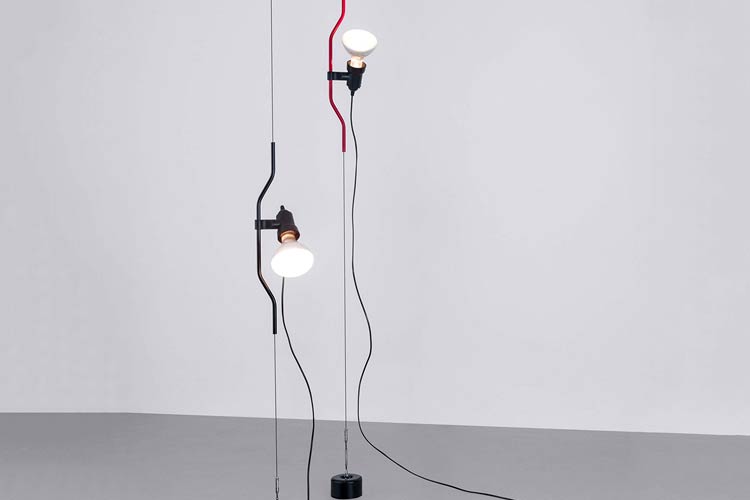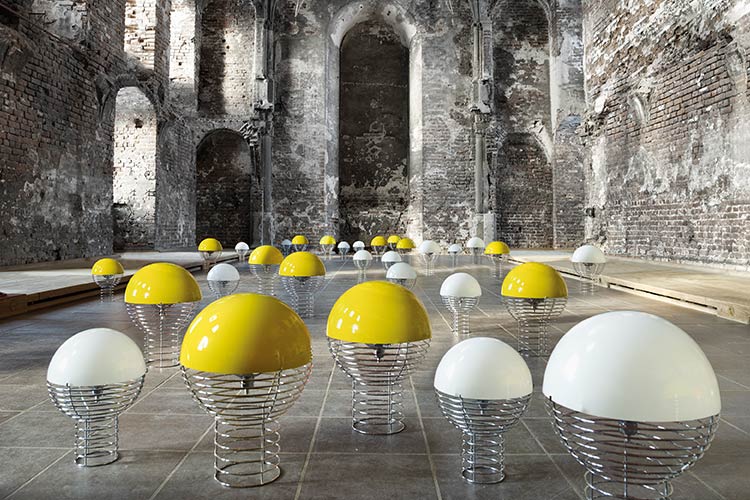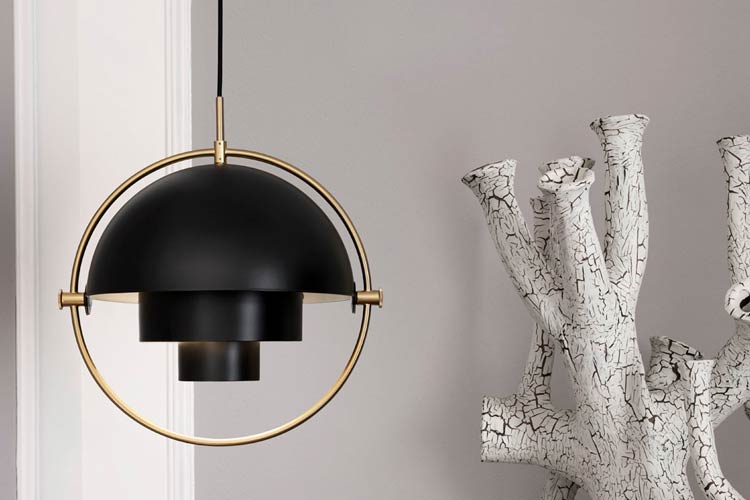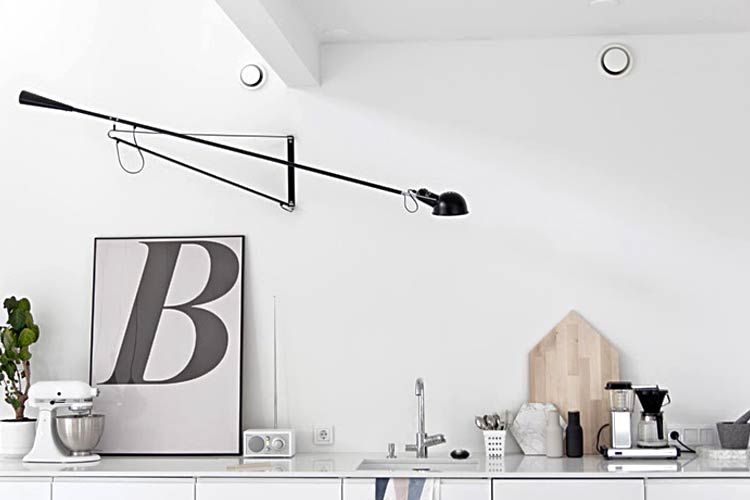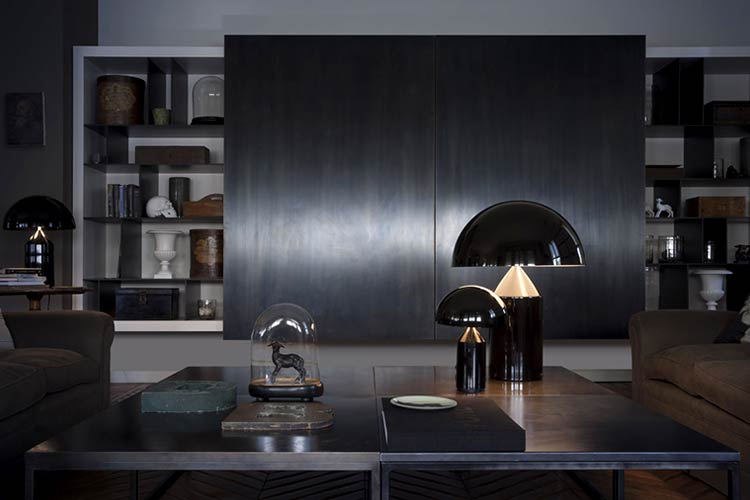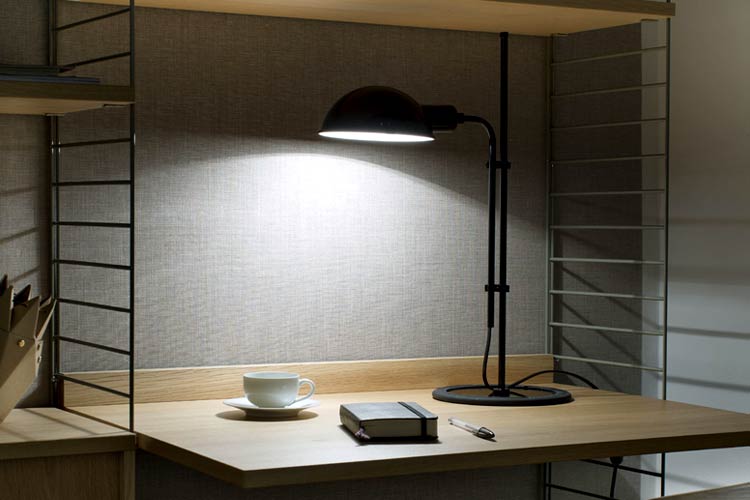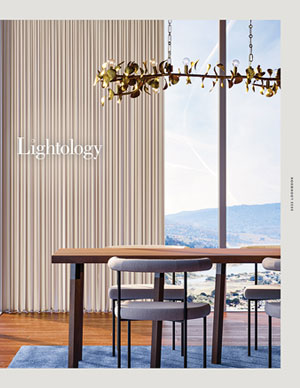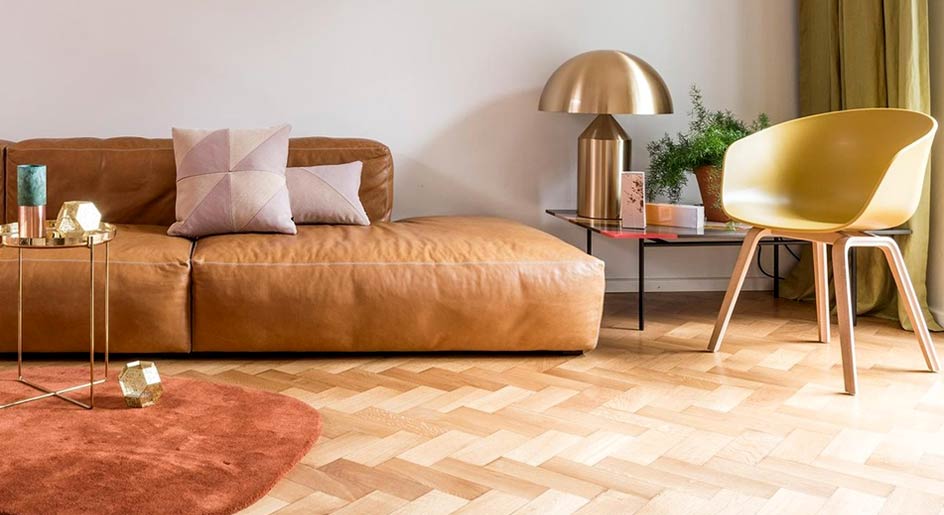
Design by Decade – 1970s
In a rebellion against the sleek minimalism of the style later known as Midcentury Modern, early 1970s design accelerated the emergence from restraint into bold personal expression that had begun in the late 1960s. An explosion of colors, shapes, and textures began to saturate households across America. At the same time, drab, earth-toned naturalism influenced by hippie culture provided a counterbalance to the popularity of Technicolor plastic mass-produced furniture and intense geometric patterns. Wood paneling, avocado green appliances, exposed brick, open floor plans, and indoor gardens were just some of the ways people sought to take it back to nature and bring a little of the outside in.
1969
VP Globe
by Verpan
Originally designed in 1969, the VP Globe is one of Verner Panton’s most iconic designs. It was first put into production in 1976 and is today manufactured by Verpan. Obviously influenced by the designs of his mentor and one-time father-in-law, Poul Henningsen of Louis Poulsen, Panton’s Globe is precisely engineered. The five colored aluminum reflectors within the acrylic ball are both unique sculptural elements and refined technical components. Light reflects smoothly and evenly from a hidden source to create soft, indirect lighting that fills a room and sets a calming mood.
This lamp stands alone as a striking conversation piece.
Shop VP Globe
1969
Componibili Storage Module
by Kartell
On permanent display at the MoMA in New York and Centre George Pompidou in Paris, the Componibili storage modules are icons of pop-design. Designed in 1969 and popularized throughout the ‘70s, these stackable units epitomize the era’s craze for mass-produced plastic furniture as well as the opposing trend toward self-expression and personal choice. Almost 50 years later, the Componibili – Italian for modular – are still popular today, with more choice in size, color, and shape than ever before.
Shop Componibili
1971
Parentesi
by Flos Lighting
It was nearly impossible to walk into a 1970 interior without finding the Parentesi light. Designed by Achille Castoglioni and Pio Manzu, the Parentesi was a true original, providing direct light was the bulb moves vertically up and down the floor-to-ceiling cable. One of the most innovative features of the Parentesi at the time was the fact the cable was capable of being cut to size.To this day, the Parentesi never fails to add timeless Italian design to your space.
Shop Parentesi
1972
Wire Table Lamp
by Verpan
No designer better captures the expressionist style of the 1970s than Verner Panton. In direct contrast to his Scandinavian contemporaries, Panton’s liberal use of color, shape, and texture earned him international recognition. His “more is more” aesthetic resonated with the American movement toward bold, individual style. Panton loved using cool and warm color tones to influence the mood of a room. His Wire Lamp originally came with four different shades (red, yellow, white, and brown) to let owners easily play with color and mood themselves.
Shop Wire Lamp
1972
Multi-Lite
by Gubi
Originally designed by Louis Weisdorf, the Multi-Lite for Gubi is a renewed interpretation of the 1972 fixture. Two cylindrical shapes lay the foundation of the pendant while the surrounding metal rings hold the shades. This iconic design embraces the golden era of Danish design and adds timeless expression to every interior.
Shop Multi-Lite
1973
265 Wall Light
by Flos Lighting
Minimal aesthetic, maximum flexibility, Paolo Rizzato’s 265 wall light swings, pivots and twists to direct light exactly where you need it. The clean, simple form steered away from the rounded, plastic Space Age vernacular so many designers were still using at the time, paring the fixture down to its purest functional form.
Shop 265 Light
1977
Atollo
by O-luce
Defying physics, the Atollo features a dome delicately balancing on the tip of conical cylinder. Creating the sense you’re gazing onto a horizon, the soft glow adds a unique sense of comfort to a variety of interiors. This refined, geometric fixture has one some of the most prestigious awards in Italian design, including “The Compasso d’Oro.”
Shop Atollo
1979
Funiculi Table Lamp
by Marset
Designed by Lluís Porqueras for, the Funiculí reflects its creator’s goal: simplicity in design. While the manufacturing process itself was initially quite complicated, the fixture itself was pared down to the pure, unadulterated essence of a lamp. Quite a departure from the excesses of the time. Funiculí gets its name from the adjustable shade that can be raised, lowered, and rotated 360° for perfect light placement. Bonus: the Moss Grey version resembles the classic ‘70s Avocado green that invaded homes of the decade.
Shop Funiculi Lamp
-
What were some of the most popular lighting styles and trends of the 1970s?
-
How did the decade's fascination with natural materials influence 70s lighting design?
-
What role did bold colors and geometric shapes play in 1970s lighting?
-
What materials and finishes were commonly used in 1970s light fixtures?
-
How can you incorporate 70s-inspired lighting into modern interior design schemes?




